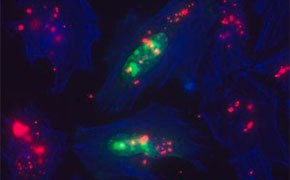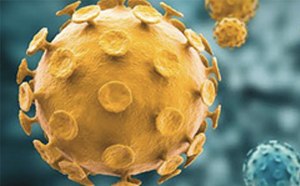Transfection & Gene Editing

Transfection is the process of introducing nucleic acids into eukaryotic cells. Cells can be stably transfected for the integration of DNA into their genome, or transiently transfected for protein expression of temporary duration. Chemical, physical, and biological methods are used to transfect cells, enabling the study of gene function and expression within a cellular environment. Applications include gene therapy, generation of induced pluripotent stem cells (iPSC), gene silencing by RNA interference (RNAi), and the production of therapeutic antibodies and proteins.
Featured Categories
Explore our comprehensive suite of transfection reagent essentials, selection tools, and protocols for when your work demands reliable cell transfection results.
Sigma-Aldrich® Advanced Genomics provides cutting-edge gene editing and modulation technologies, including CRISPR, Cas9, and RNAi.
Common Transfection Methods
- Lipids and liposomes: Cationic lipids form liposomes containing DNA or RNA for delivery. These liposomes fuse with the cell membrane and release nucleic acid into the cell.
- Calcium phosphate: Calcium phosphate facilitates the binding of DNA to the cell surface, allowing genetic material to enter the cell by endocytosis.
- Cationic polymers: In polymer-based transfection, exogenous DNA forms complexes with cationic polymers such as polyethylenimine (PEI) that enter host cells by endocytosis.
- Lentiviral transduction: Cells are infected with modified lentivirus vectors, which convert their viral RNA to double stranded DNA for integration into the host genome for delivery.
- Microinjection: Target cells are first positioned under a microscope. Nucleic acid is then directly injected into the cytoplasm or nucleus using a fine glass capillary needle.
- Electroporation: Cells are exposed to high-intensity electric current that destabilize membranes, increasing their permeability for gene delivery.
Transfection is routinely used in gene editing and gene silencing techniques that have enhanced our understanding of complex biological processes and enabled the use of gene therapy to treat disease.
- CRISPR-Cas systems exploit a bacterial defense mechanism that uses genetic CRISPRs (Clustered Regularly Interspaced Short Palindromic Repeats) coupled with Cas (CRISPR-associated) endonucleases to cut genomic DNA at targeted positions and remove or replace genes in vivo.
- Engineered zinc finger nucleases (ZFNs) are constructed of DNA binding domains and endonucleases and cleave DNA at targeted sites for gene editing.
- RNAi reagents such as short hairpin RNAs (shRNAs) and small interfering RNAs (siRNAs) limit gene transcript levels for gene silencing by either suppressing transcription or activating sequence-specific RNA degradation processes.
Visit our document search for data sheets, certificates and technical documentation.
Related Articles
- Transfection introduces genetic material into cells, aiding research in gene expression and cell biology.
- Browse our convenient transfection reagent selection guide to match the best reagent for your specific cell line and application needs.
- Automation ensures reproducible results in high-throughput assays like cell transfection, reducing manual handling variations.
- Small inhibitory RNAs offer easy gene expression knockdown in mammalian cells, revolutionizing gene research.
- Get tips for handling lentiviruses, optimizing experiment setup, titering lentivirus particles, and selecting helpful products for transduction.
- See All (17)
Related Protocols
- Universal Transfection Reagent enables efficient nucleic acid delivery into various cells, compatible with different cell culture conditions.
- Protocols for Transfecting Common Cell Lines with X-tremeGENE™ Transfection Reagents
- Cell preparation for transfection Plate cells approx. 24 hours before transfection making sure cells are at optimal concentration (70 – 90 % confluency).
- Calcium phosphate transfection is a common method for the introduction of DNA into eukaryotic cells. This protocol can be optimized for use with a wide variety of cell types.
- Product manual provides detailed protocol for easy DNA transfection.
- See All (22)
Find More Articles and Protocols
How Can We Help
In case of any questions, please submit a customer support request
or talk to our customer service team:
Email custserv@sial.com
or call +1 (800) 244-1173
Additional Support
- Chromatogram Search
Use the Chromatogram Search to identify unknown compounds in your sample.
- Calculators & Apps
Web Toolbox - science research tools and resources for analytical chemistry, life science, chemical synthesis and materials science.
- Customer Support Request
Customer support including help with orders, products, accounts, and website technical issues.
- FAQ
Explore our Frequently Asked Questions for answers to commonly asked questions about our products and services.
To continue reading please sign in or create an account.
Don't Have An Account?

